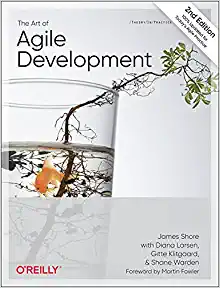Timeboxed Iterations
4 April 2023
Timeboxed Iterations are a way to divide and schedule up the work on a project, particularly associated with agile software projects. The team breaks down the visible features of the software into User Stories, and breaks down time into fixed periods (e.g. one week), called iterations. They then schedule the stories by allocating them to the iterations. Stories are roughly estimated so that the team can figure out how many stories fit in an iteration.
Iterations are time-boxed, in that there is no mechanism to slip the end date of an iteration in order to complete any stories. If a story isn't completed within the next iteration, it is considered as not-done and the team creates a new story for the work remaining to complete it.
A good way to figure out the capacity of an iteration is to use Yesterdays Weather. We set the capacity of future iterations to the amount of stories we completed in the last one. In practice it's wise to consider the last few iterations to smooth changes to the capacity number. The most obvious way to do that is to take the average of the last few iterations, but a better course is to use the minimum to provide valuable Slack. This mechanism is a feedback loop that naturally self-calibrates.
An alternative approach to Timeboxed Iterations is Continuous Flow. Here there are no iterations, when a story is complete the team simply picks the next story from a prioritized list. Many people prefer this as it eliminates the effort needed to assign stories to iterations - you just pick the next one. But iterations provide a regular cadence that people find valuable in setting a rhythm for their work.
Iterations are most valuable due to their ability to make problems visible. The end of an iteration is a natural stopping function that provides a check against serious overrun, setting up a feedback loop for the quality of estimates. If a team regularly runs out of time to complete stories, or usually sees fraught rushes of work at iteration end - these are signals of snags in the team's way of working. This problem-signaling mechanism is especially valuable for teams that are struggling with good engineering practices. The best cure for these problems is to add more slack to work on the underlying issues, a cure that is sadly undervalued.
Further Reading
Many books have been written on agile planning over the years, most of which are based on timeboxed iterations. My current recommendation is The Art of Agile Development which goes into detail on choosing iteration length, figuring out capacity, tracking, and handling urgent requests. The relevant chapter on task planning is available on his site.
I might also mention my own book on Planning Extreme Programming which I co-wrote with Kent Beck early this century. Although I'd like to think the soaring elegance of our Anglo-West-Coast prose is never to be surpassed in the genre, these days I would turn to The Art of Agile Development instead.
Acknowledgements
Alexander Steinhart, Ana Lallena, Andrew Thal, David Jetter, Ian Cartwright, James Shore, John Hearn, Kennedy Collins, Kief Morris, and Premanand Chandrasekaran discussed this post on our internal mailing list


